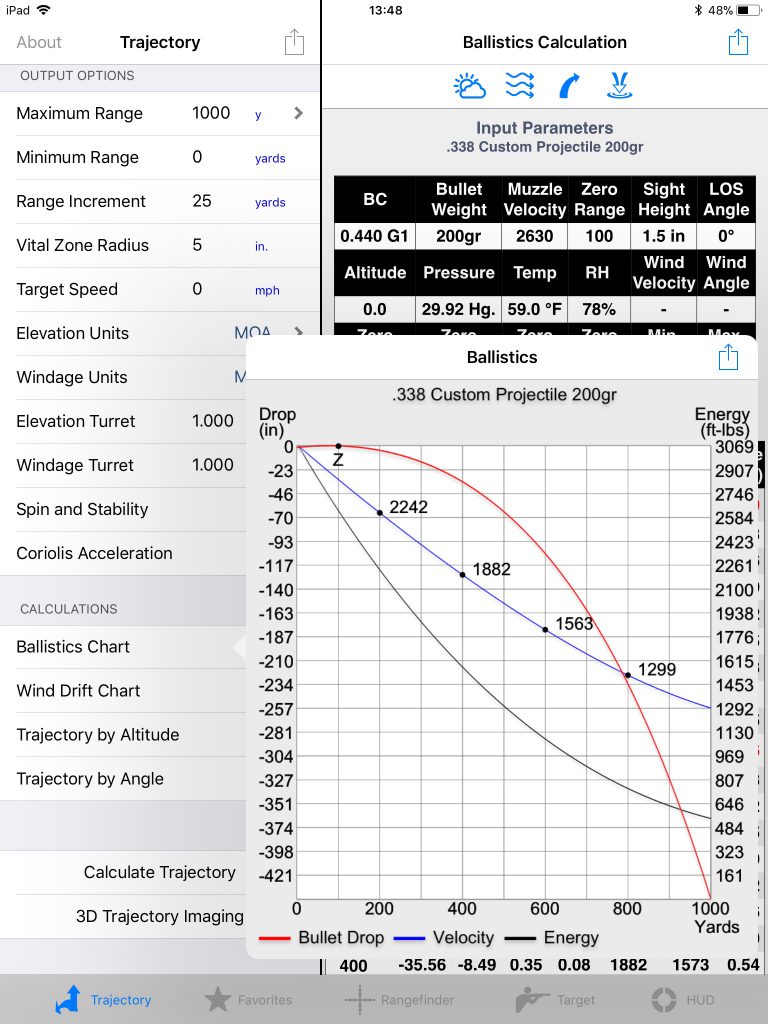On The Range With Ballistic:
The Big Curve – Bullet Trajectory, Precision Shooting and Ballistic

According to the online version of the Merriam-Webster Dictionary, “trajectory” is defined as, “the curve that a body (such as a planet or comet in its orbit or a rocket) describes in space.”
Essentially, once it leaves the muzzle of your barrel, your bullet starts on a curved path we call trajectory. Many factors influence that trajectory including the shape and design of the bullet, the bullet’s velocity, and atmospheric conditions. And, of course, the big factor, gravity, which exerts a steady downward pull on the bullet.
So, can you the shooter affect your bullet’s trajectory? Not once you pull the trigger. The best you could have done-and should have done–is to account for and determine that trajectory before the shot was taken.
The easiest way to accomplish this? Use Ballistic and make sure you fill in all the fields on your Ballistic profile for each round you are shooting.
Your bullet’s velocity-at the muzzle-is a critical factor in determining trajectory, and this number is among your more important inputs for your Ballistic profile of your rounds. Knowing a round’s muzzle velocity requires the use of a quality chronograph; a ten-round average of chronographed rounds is sufficient.
Enter your bullet weight in the Ballistic profile and the ballistic coefficient of that bullet, too. The ballistic coefficient is the numeric representation of a projectile’s ability to cut through the air.
Speaking of air, the denser the air, the more air resistance a bullet will face. This resistance slows the bullet, increasing flight time and giving gravity more of an opportunity to work on the bullet.
Air temperature, altitude and barometric pressure all affect air density, and these atmospheric conditions are important inputs for your Ballistic profile. Don’t forget to adjust these atmospheric inputs as weather conditions change.
Once you have entered all your inputs, Ballistic not only figures your bullet’s trajectory and lists the bullet’s drop at various points on the trajectory curve. Ballistic can also create and let you view different charts to display the energy, velocity, and drop for your current projectile.
Ballistic can even make up trajectory charts based on the altitude or the shooting angle and will let you compare up to eight projectiles together on the same screen.
Don’t let trajectory get you down–and take you off target! Before you squeeze that trigger, get to know your “curve” with Ballistic and make every shot count.

